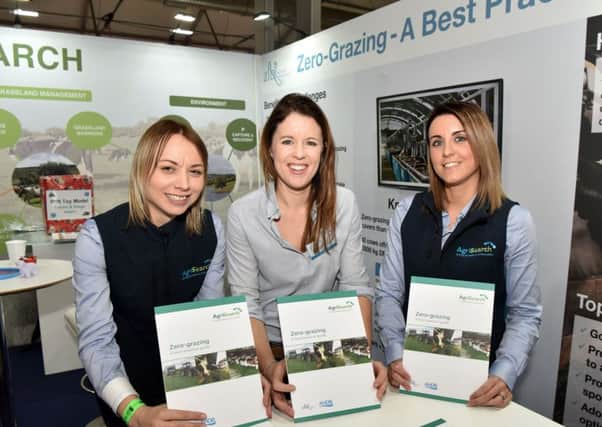Launch of new best practice guide


The booklet, which is available for download from the AgriSearch website, presents the findings of five zero-grazing research studies carried out by AFBI (funded by DAERA and AgriSearch) and SRUC in recent years.
AFBI’s Dr Debbie McConnell comments: “Feed and forage accounts for 33 per cent (9.5ppl) of total production costs on UK dairy farms and so finding methods to utilise low cost forages such as grass to their full potential is vital.
Advertisement
Hide AdAdvertisement
Hide Ad“With increasing herd sizes, more fragmented grazing land and wetter summers, interest in zero-grazing systems has increased considerably however until recently we knew little about how these techniques compared to grazing or housed management systems,” she continues.
The guide provides results from studies comparing the performance of dairy cows fed zero-grazed grass with those under full time grazing management and also cows housed and fed silage full-time.
Grazed grass costing £99 per tonne of utilised DM when compared to zero-grazed grass (£123 per tonne utilised DM) or silage (£147 per tonne utilised DM) was the most economical feed available for dairy cows.
However, cow performance was highest from zero-grazing relative to either grazing or silage systems.
Advertisement
Hide AdAdvertisement
Hide AdThis coupled with an increase in grass utilisation from zero-grazing led to the highest margin over feed and forage per hectare for this system.
The key to achieving good results from zero-grazing is ensuring a high level of grass management, comments AgriSearch Project Officer Dr Elizabeth Earle.
“Findings from the studies and our farmer case studies show that regular measurement of grass and cutting at the correct pre-grazing covers are essential to maximising animal performance and system efficiency,” she said.
Alongside results from research trials, the booklet also outlines the key management practices farmers should be aware of when growing and feeding zero-grazed grass to ensure the system is successful. Some of these practices include:
Advertisement
Hide AdAdvertisement
Hide AdKeep pre-cutting covers below 4000kg DM/ha to ensure good quality forage, animal intake and cow performance
Have a flexible approach to time of day for cutting in order to optimise grass dry matter content, especially in wet conditions
Provide adequate feed space and push up grass regularly to ensure good intakes of zero-grazing grass
Supply fresh grass to cows at least every 24 hours to minimise spoilage and wastage
Further information on zero-grazing and the zero-grazing guide can be downloaded from www.agrisearch.org/publications or hard copies are available on request.